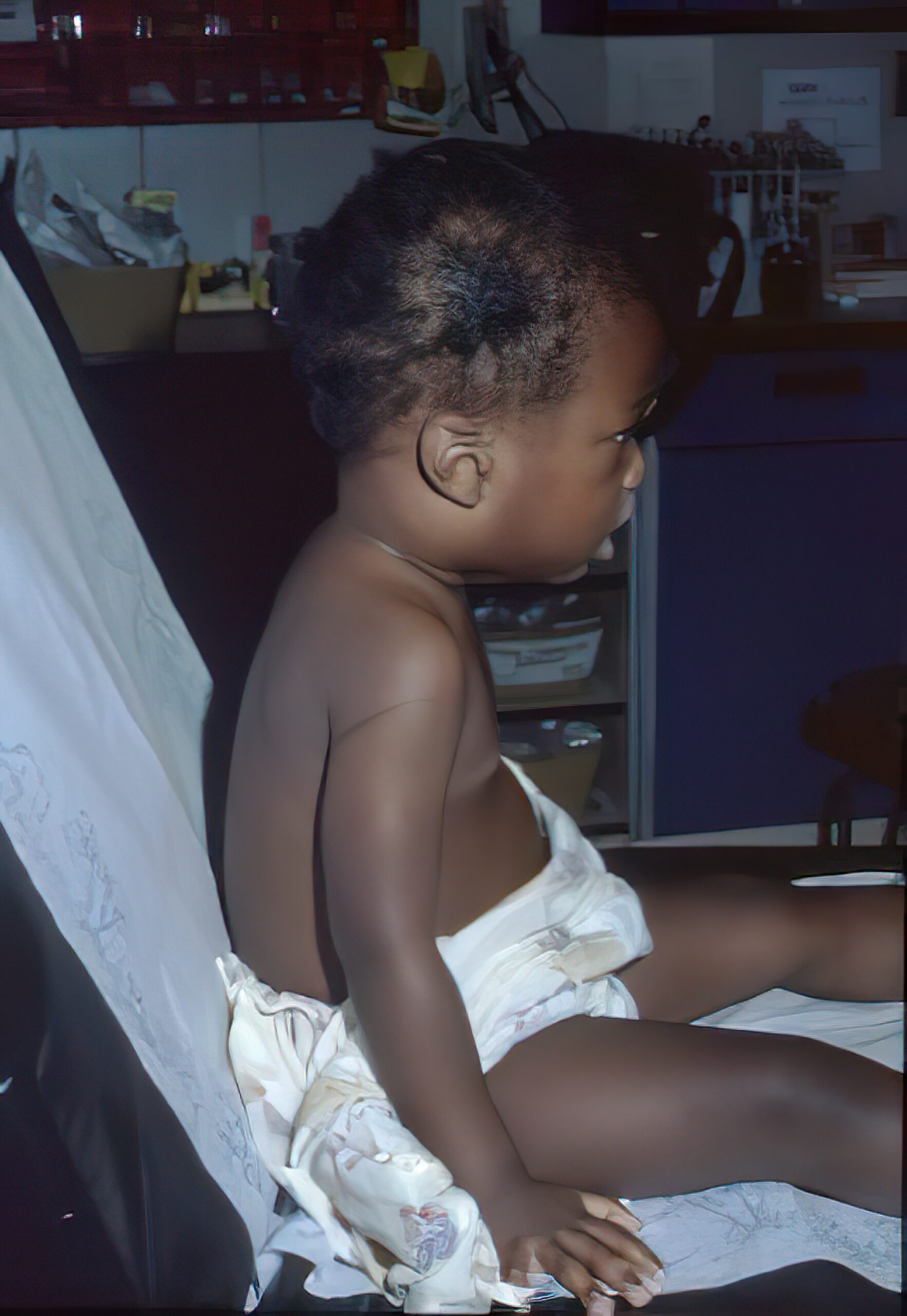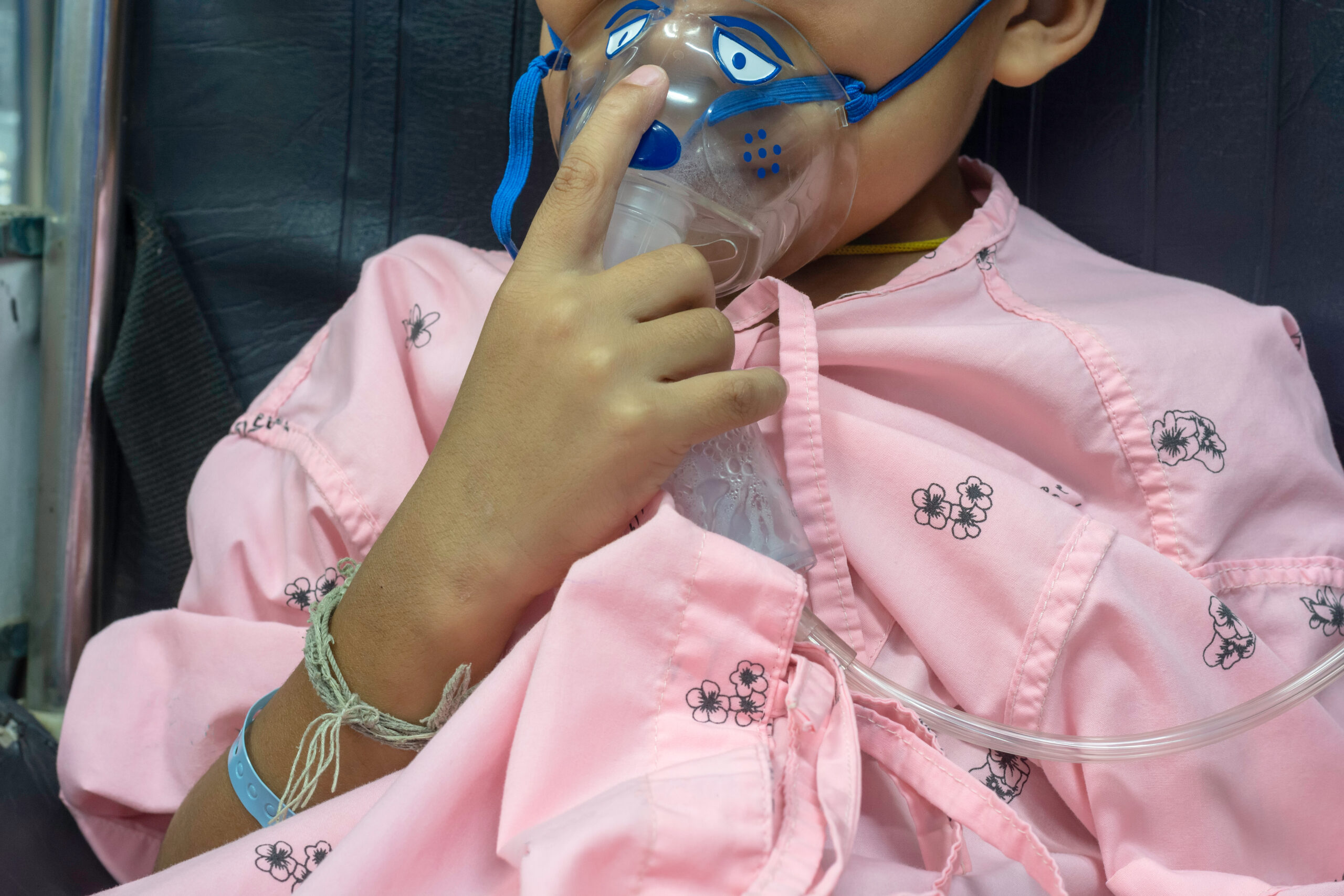Chapter Progress
0% Complete
Get PALS Certified Today
Life-Threatening Conditions
When performing the primary assessment, the provider should use the ABCDE survey to look for the following life-threatening conditions:
- Airway: complete obstruction
- Breathing: apnea, increased respiratory effort (or increased work of breathing), and bradypnea
- Circulation: weak or absent pulses, signs of poor perfusion, hypotension, and bradycardia
- Disability: unresponsiveness, decreased level of consciousness
- Exposure: significant hypothermia, bleeding, petechiae, and purpura that may denote septic shock or coagulopathy

For the child in respiratory distress, the head of the bed is raised to help place the patient in the position that allows for the most comfortable and effective respirations (remember to put the side rails up).

Child in Respiratory Distress
The provider must activate the emergency response system and begin lifesaving interventions when they identify one of the above life-threatening conditions. If the child’s life is not immediately threatened, the provider performs the secondary and diagnostic assessments, as previously discussed.